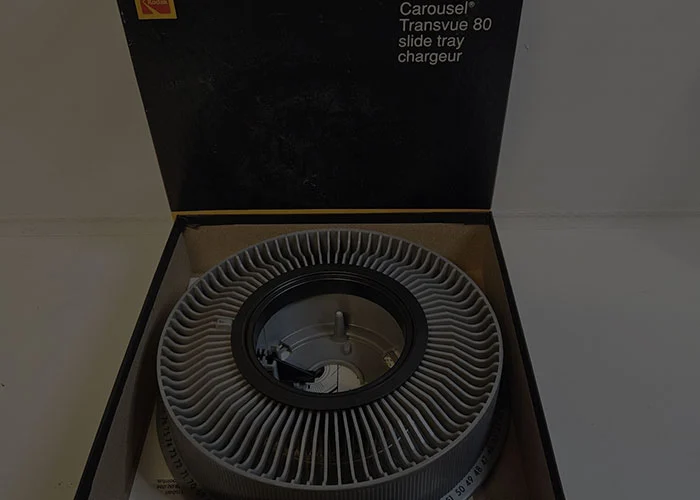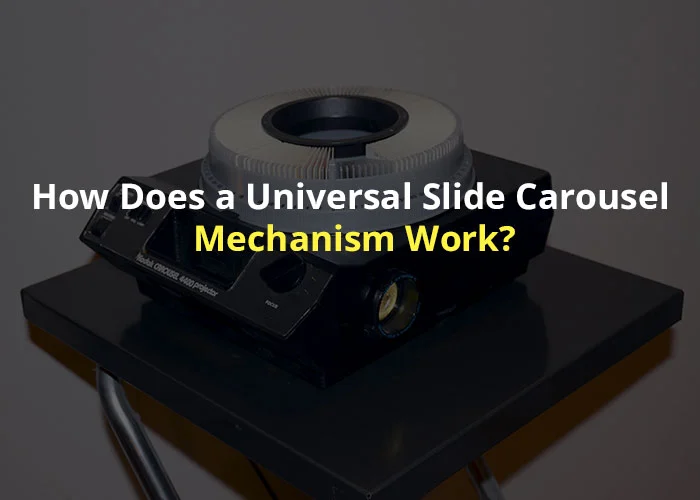Introduction
A universal slide carousel is a classic projection mechanism used to display photographic slides in sequence. Once a staple in presentations and photography, this technology remains relevant in archival institutions and analog projection setups.
If you’ve ever wondered how a universal slide carousel works, this guide will walk you through its mechanics, operation, benefits, troubleshooting tips, and historical significance.
What is a Universal Slide Carousel?
A universal slide carousel is a circular tray designed to hold photographic slides, ensuring smooth transitions between images. Typically, these slides are 35mm film transparencies mounted in rectangular frames.
The term “carousel” refers to the circular rotation of the tray, which allows slides to cycle through in a loop or a controlled sequence.
Key Components of a Slide Carousel:

- Slide Tray – A circular holder with slots for multiple slides.
- Advancement Mechanism – Moves slides into the projection chamber one at a time.
- Lens System – Focuses and projects the slide image onto a screen.
- Illumination System – Uses a bright halogen lamp for clear image display.
- Remote Control or Timer – Enables manual or automatic slide advancement.
How Does a Universal Slide Carousel Work?
1. Loading the Slides
- The tray can hold 80 to 140 slides, depending on the model.
- Each slide is placed into a designated slot, numbered for order.
- Slides must be correctly positioned, with the image facing the lens.
- Some models feature a locking mechanism to prevent slides from falling out when removed.
2. Rotating Mechanism
- A motorized system rotates the tray in a controlled manner.
- As the tray moves, each slide enters the projection chamber.
- The cycle continues automatically or stops at a specific slide.
3. Projection Process
- A bright halogen lamp illuminates the slide.
- The image is focused through an optical lens system onto a screen or wall.
- Users can adjust focus, brightness, and image size for clarity.
4. Advancing and Reversing the Slides
- Slides can be moved manually or automatically using a button or remote.
- Some projectors feature timed automation, cycling slides at set intervals.
- The reverse function allows scrolling back through previous slides.
5. Ejecting and Changing the Carousel
- After the presentation, the tray can be removed.
- Slides can be reordered or replaced as needed.
- Some models support interchangeable trays, allowing for quick slide swaps.
Advantages of a Universal Slide Carousel

1. Organized Presentations
- Ensures a structured visual flow.
- Ideal for lectures, business meetings, and photo exhibitions.
2. Hands-Free Automation
- Allows for automated slide cycling.
- Some models feature pre-programmed intervals.
3. Reliability & Durability
- Unlike digital projectors, slide carousels don’t crash or freeze.
- Mechanical components last longer with minimal maintenance.
4. High-Quality Image Projection
- Optical slides maintain sharpness and vibrant colors.
- Unlike digital screens, film projection offers a natural texture.
Common Issues & Troubleshooting Tips
1. Slides Stuck in the Carousel
Solution:
- Check for misalignment or jammed slides.
- Power off the projector and manually rotate the tray.
- Ensure slides are correctly loaded.
2. Blurry Image Projection
Solution:
- Adjust the focus wheel.
- Clean the lens to remove dust.
- Check slides for scratches or warping.
3. Carousel Not Advancing Slides
Solution:
- Inspect the motor and belt drive.
- Ensure the remote control or timer is properly set.
- If using manual advance, check for mechanical obstructions.
Historical Significance of Slide Carousels
In the mid-to-late 20th century, slide carousels were widely used for:
- Educational Presentations – Common in classrooms and corporate training.
- Family Photo Viewing – A way to showcase memories before digital photography.
- Art & Photography Exhibitions – Used for professional displays.
Although digital projectors have largely replaced them, slide carousels remain popular among collectors, film enthusiasts, and archivists.
Conclusion
A universal slide carousel is a timeless tool for seamless and professional image projection. By understanding its mechanics, you can maximize its potential for education, art, and archival preservation.
While digital formats now dominate, analog slide projectors remain a nostalgic and reliable option for photography lovers. Proper handling and maintenance ensure a smooth, high-quality presentation experience for years to come.
For additional recommendations on slide projectors and accessories, visit this Wikipedia page.
- Kickstart Your Dream Career in Finance with B.Com in Banking and Insurance at REVA University
- What’s the Difference Between College and University? Bes Complete Guide for Students
- Do Colleges and Universities Use Percentage-Based Grades?
- How Cold is the Water Park at Universal Orlando?
- What Language is “Así Que en la Universidad”? A Comprehensive Breakdown

